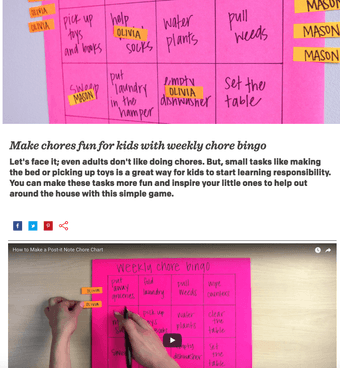Content
Breaking Free – Producing Daring Content for a Conservative Brand

Among the many battles faced by brands and agencies, stimulating interest in relatively uninspiring products is a crux for marketers worldwide. For slightly more sensible brands, while their quest for creating engaging content can be risky and uncertain, it’s invaluable when successful.
In a time of unrestricted creativity and ever-evolving technology, what are the boxes that brands can tick for their marketing strategy? Within the marketing subcategories of on-site materials and link building content, how can a bland brand break through the glass-ceiling of their own industries creative constraints?
Below, we’ve outlined some of the methods utilised by those looking to create an exciting identity for their brand.
On-Site Content
Forming your brand’s identity is about bridging gaps and forming relationships. An unexceptional product with few frills requires lively content which can simultaneously add value. With 45% of marketers stating that blogging is their top priority in their overall strategy, the benefits of blog posts are still there to be reaped. The task beset to a company offering everyday products is creating an on-site environment that manages to captivate users.
So when marketing an inescapably mundane product, what brands serve as the yardsticks you can measure your daring content against?
Post-It – 3M
Multinational manufacturing conglomerate 3M is has a rich history of innovation and one of its most ubiquitous inventions, the Post-It note, carries this history into their marketing strategy.
Post-It’s ‘featured articles’ section of their site offer a mix of video and standard blog-post-format tutorials giving useful but creative alternate uses for the notes. They also split the different genres of article by sections such as ‘productivity’ and ‘creativity’.
The combination of a vividly colourful design and informative visual material makes what is essentially an advert for their product seamlessly drift into something that serves the user themselves. The creativity of the blogs themselves draws parallels with social sites such as Pinterest, where members can engage with the product in newfound ways.
What Post-It and 3M as a whole do so successfully is their consistency across different marketing channels. An example from their social channels showcases their efforts to involve the user in their own branding, a cyclical effort that invites interaction so as to generate interest in an admittedly basic product.
Post-It benefit hugely from their appeal on social channels from customers that share their own experience with the product in a fun, non-intrusive manner. The explicit customer review format removes the slightly organic style of their social media and on-site content, whereas the customer stories features boasts a much broader appeal.
Allowing users to portray their own experience of the product tackles the often difficult task that more unexciting companies face of putting themselves at the forefront of their marketing efforts. The simple efforts made to be more personable in their on-site content mean that 3M can advertise Post-It in a way that doesn’t mention numbers or business jargon. Take note!
Link Building Content –
In industries like entertainment or alcohol, achieving links from high-authority sites is made easier by the freedoms given to you by your product. It’s undoubtedly easier for marketers to envisage the type of content people want to see from these brands, so the platform is virtually set for them already.
A brand deemed more conservative faces the choice of being daring with their content and losing authenticity, or playing safe and receiving little or no interest from the press. However, there is now a range of technology at the disposal of brands that are looking to produce more innovative content for a bolder link-building strategy.
Video – Staples
A prime example of ‘knowing your audience’ when it comes to content is the video series produced by stationary firm Staples. Highly applicable to a business-focused audience, their ‘Office Party Etiquette’ series generated around 80,000 views, creating hugely relatable pieces of video content that managed to distance themselves well from their own product.
In the space of a year, branded video content has risen 258% on Facebook and 99% on YouTube (tubularinsights) and Staples are clearly keen for their brand not to miss out in this uprise.
Evolving the content you produce, regardless of what product you have, to appeal to younger demographics is increasingly becoming a risk worth taking. Through their efforts, Staples have generated strong followings on Facebook (1.5 million), Twitter (321,000) and Instagram (53,200), staggering figures when you consider the supposed creative restraints an industry such as theirs has.
Keynote speaker and content marketer Kathy Klotz-Guest writes that ‘“conservative firms…need to adapt marketing for younger audiences – regardless of whether you’re marketing to millennials or baby boomers’. Therefore, it seems crucial that content, designed for link-building purposes, is seen as an investment which can widen the demographics you are able to appeal to.
The Future
As content endlessly develops, so too must the strategies of every brand in the marketing sphere. Holiday specialists and car brands have helped pave the way for the integration of Virtual Reality (VR) into the realm of content marketing. Hiking shoe manufacturer Merrell, in partnership with Framestore VR Studio, celebrated the launch of their incredibly advanced boot ‘The Capra’ with their transformative VR experience, ‘Trailscape’. This allowed users to journey through vast landscapes with 4D motion tracked ‘hikes’ whilst wearing the shoe.
By highlighting the theme of travel as the most exciting element of their brand, Merrell were able to showcase their product alongside a memorable user experience. This only furthers the notion that content relies on so much more than words to communicate the story of a product or brand, and using advanced technology can make this even more effective.
To conclude, while Post-It related tips and a VR hiking experience position themselves miles apart in the spectrum of content marketing, their remains consistent likenesses. The simple and seemingly unappealing brands are brought to life by the content, but remain loyal to the product. Let your content decide what is and isn’t interesting, and let your brand reap the rewards.
Share













